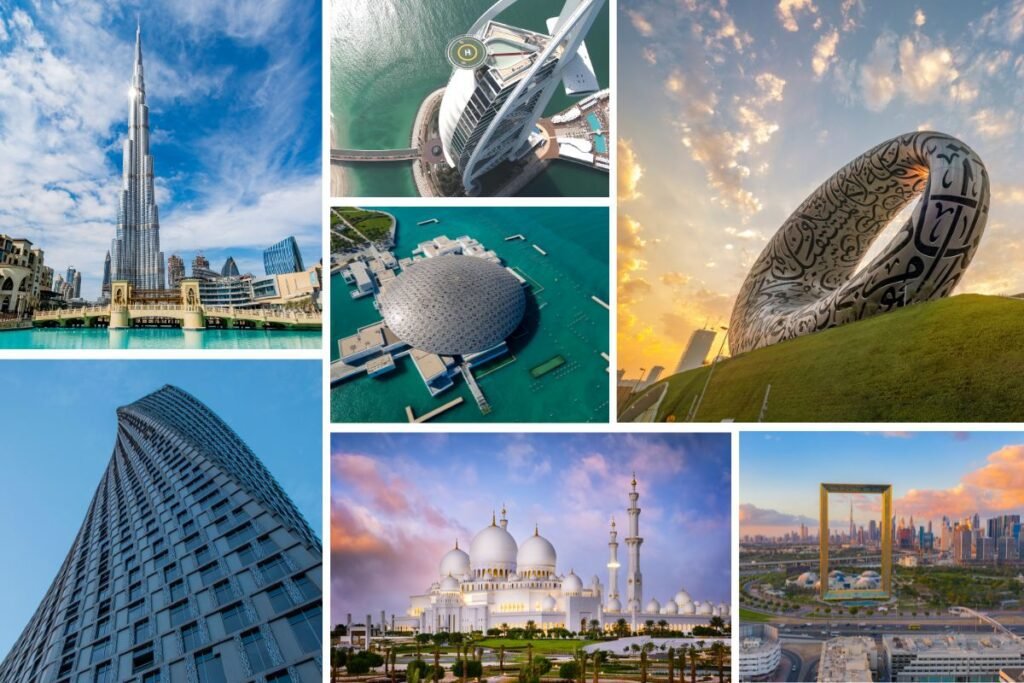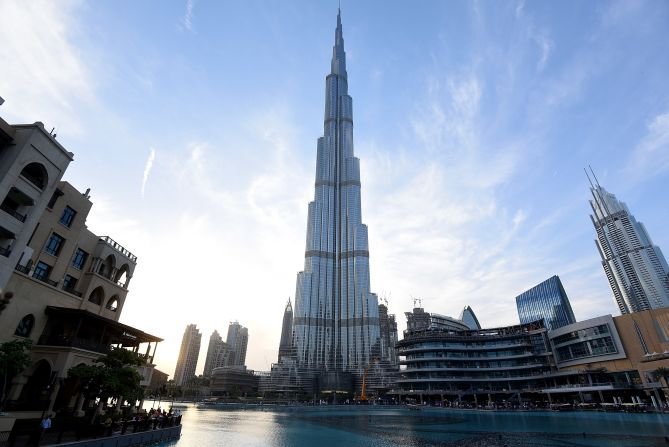The United Arab Emirates is home to some of the most iconic skyscrapers in the world. From Dubai’s famous skyline to rising towers in Abu Dhabi and Sharjah, these buildings are not just tall—they’re marvels of modern engineering. But have you ever wondered what’s actually inside these giant structures? Beyond their glass exteriors lies a fascinating world of design, innovation, and luxury.
In this article, we take you on a structural journey inside some of the UAE’s tallest towers. You’ll discover how they were built, what makes them strong, and what’s hidden within their towering heights. Whether you’re a tourist, an architecture lover, or simply curious, this is your backstage pass to the sky-high wonders of the UAE.
Burj Khalifa: A Vertical City in the Clouds
At 828 meters, the Burj Khalifa in Dubai is not only the tallest building in the UAE, but in the entire world. From the outside, it’s breathtaking. But step inside, and you’ll find a vertical city filled with luxury apartments, corporate offices, hotels, and more.

The tower is made up of over 160 floors, each built to handle high winds, temperature changes, and heavy use. Its Y-shaped design helps reduce wind pressure and gives stability to the structure. In the center, a strong concrete core holds everything together, acting like a spine.
Inside the Burj Khalifa, there’s the Armani Hotel, designed by fashion icon Giorgio Armani himself. You’ll also find private residences, top-tier restaurants, observation decks on the 124th and 148th floors, and a fitness center with breathtaking views. The elevators are among the fastest in the world, taking you from ground to sky in under a minute.
Marina 101: Dubai’s Second Tallest Gem

Standing tall in the Dubai Marina at 425 meters, Marina 101 is the second tallest building in the UAE. While it may not be as well-known as the Burj Khalifa, it holds its own charm and engineering brilliance.
The structure is divided into two main sections: a hotel and luxury residential apartments. It also features a sky lounge, restaurants, and recreational areas. The building uses reinforced concrete and steel for strength, and its sleek design allows it to withstand coastal winds coming in from the Arabian Gulf.
One unique feature of Marina 101 is its focus on comfort and lifestyle. Each apartment is designed with floor-to-ceiling windows, letting residents enjoy full views of the sea, the Palm Jumeirah, and Dubai’s glowing skyline.
Princess Tower: Living in the Sky
Also located in Dubai Marina, the Princess Tower was once the tallest residential building in the world. At 413 meters, it still ranks among the top. This tower is all about living high—literally.
With over 100 floors, it houses more than 700 luxury apartments, from one-bedroom flats to penthouses. The structural design includes thick reinforced concrete walls and deep foundations, which are essential for supporting such a massive building.
Residents enjoy indoor and outdoor swimming pools, a gym, and even a games room, all perched high above the city. The top floors offer stunning panoramic views of Dubai, especially at sunset. It’s no surprise this building attracts residents from all around the world.
Al Hamra Tower: Rising Tall in Ras Al Khaimah
While most tall buildings in the UAE are found in Dubai and Abu Dhabi, the Al Hamra Tower in Ras Al Khaimah stands as a symbol of growth in the northern emirate. At around 427 meters, it’s one of the tallest structures outside the major city centers.
This tower blends business with luxury. Inside, there are office spaces, hotels, and serviced apartments. Its design reflects Arabic architecture, with clean lines and graceful curves. Engineers used a combination of steel and concrete to make sure the tower is safe, even during high winds or tremors.
The Al Hamra Tower has become a landmark in Ras Al Khaimah and points to a future where even more architectural wonders may rise in other parts of the UAE.
The ADNOC Headquarters: Sustainable and Smart
In Abu Dhabi, the ADNOC Headquarters stands out—not just for its height of 342 meters, but also for its smart and sustainable design. This building belongs to the Abu Dhabi National Oil Company and serves as its main office.

The tower’s glass façade isn’t just for looks—it’s built to reduce heat and save energy. Inside, sensors control lighting and air conditioning, helping reduce the building’s carbon footprint. It even has a special wind-tunnel-tested design to keep it steady and comfortable inside.
The ADNOC tower includes office floors, meeting rooms, and high-tech control centers. From here, major decisions about the country’s energy future are made.
Structural Strength: What Makes These Towers Stand?
So what do all these buildings have in common? It’s not just height—it’s strength and safety. Building a skyscraper in the UAE comes with unique challenges. The hot climate, desert winds, and even the sandy ground all affect how structures are designed.
Most tall buildings in the UAE use a central core made of high-strength concrete. This acts like the backbone of the building. Floors are supported by beams and columns, and the exterior often uses glass and steel to keep the structure light yet strong.
Foundations are deep—sometimes going more than 50 meters underground—to anchor the building and prevent movement. Engineers also build these towers with sway in mind. Tall buildings naturally move a little in the wind, but clever design ensures it’s barely noticeable.
Innovation at Every Level
Skyscrapers in the UAE are not just about height. They’re full of cutting-edge technology. From high-speed elevators and smart home systems to eco-friendly cooling and solar panels, these towers are built for the future.
Some buildings even recycle water for use in gardens or cooling systems. Others have special systems to manage waste more efficiently. These innovations help reduce environmental impact and improve the quality of life for people inside.
A Future Built Higher
The UAE isn’t done building up. New towers are already in progress, including those with rotating floors, sky gardens, and even drone landing pads. With Expo City Dubai setting the tone for futuristic development, we can expect the next generation of skyscrapers to be even more advanced and sustainable.
These tall buildings are more than just record-breakers. They are homes, workplaces, and symbols of progress. They reflect the UAE’s vision of being a global leader in innovation and design.
So next time you look up at a skyscraper in the UAE, remember this: it’s not just a tall building—it’s a story of human achievement, smart engineering, and bold ambition.













